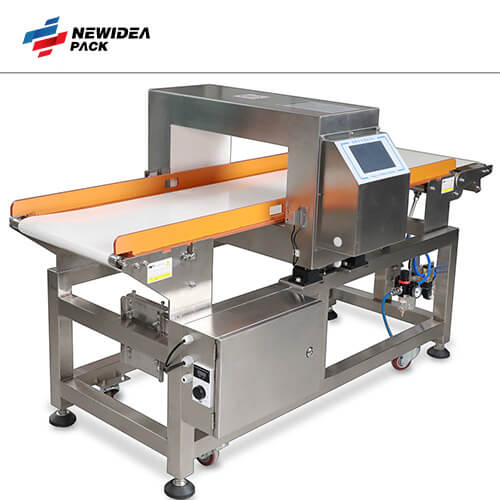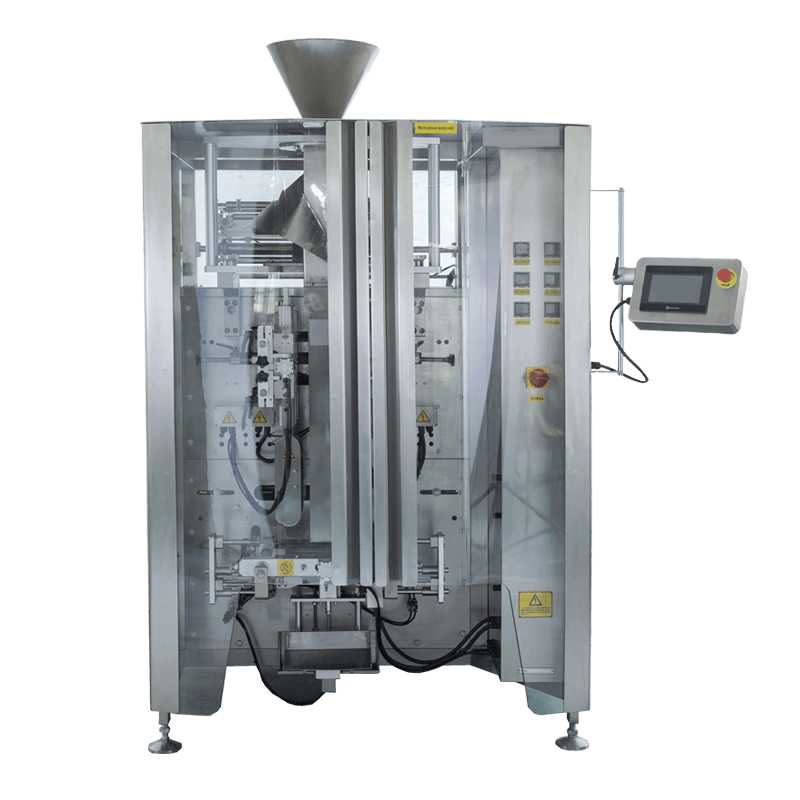Metal Detectors For Food Packaging | Authoritative Guide
Metal detection in food packaging is a crucial process and plays a very important role in the quality control system of the entire food packaging. NEWIDEAPACK, as a company with many years of experience in packaging machinery and equipment manufacturing, has a great reputation in the food packaging industry. In order to let more food packaging industry practitioners understand the importance of food safety packaging, this authoritative guide on metal detectors for food packaging has been specially prepared for this purpose.
What is metal detectors for food packaging ?
The metal detector for food packaging is a piece of special detection equipment for various metal impurities in food packaging such as meat, fungi, candy, beverages, grains, fruits and vegetables, dairy products, aquatic products, health products, additives, and condiments. Different from other types of metal detectors, this metal detector is mainly used for various types of food packaging. It is very different from other metal detectors in terms of the type of metal detected, the detection range, and the detection depth.

Working principle of metal detector for food packaging
Food metal detectors apply the principle of electromagnetic induction to detect metals. All metals including ferrous and non-ferrous have high detection sensitivity. The entry of ferromagnetic metals into the detection area will affect the distribution of magnetic field lines in the detection area, thereby affecting the magnetic flux in a fixed range. When non-ferromagnetic metals enter the detection area, an eddy current effect will occur, and the magnetic field distribution in the detection area will also change. Causes the detector to beep.
The accuracy and reliability of the detector depending on the stability of the frequency of the electromagnetic transmitter, which generally uses an operating frequency from 80 to 800 kHz. The lower the working frequency, the better the detection performance of iron; the higher the working frequency, the better the detection performance of high carbon steel. The sensitivity of the detector decreases with the increase of the detection range, and the magnitude of the induced signal depends on the size and conductivity of the metal particles.
Composition of metal detectors for food packaging
Part 1: Detector coil
The detector coil has a built-in “balanced coil”, three coils are wound on a non-metal frame or a former, and the coils are completely parallel, and the middle coil (transmitting coil) generates a magnetic field through high-frequency current. The two coils on either side of the middle coil are the receiver coils. Since the two coils are exactly the same and kept at the same distance from the transmitter, their induced EMFs are exactly the same.When these coils are connected in reverse, the electromotive forces cancel each other out, resulting in a “zero output”, a state of equilibrium. It is then poured with cement to ensure that when no product passes through, the magnetic field is in a state of dynamic equilibrium and is not affected by external environments such as temperature changes, vibration, and electromagnetic interference.During the detection, the product passes through three coils one after another. If it contains metal foreign objects, the balance of the magnetic field will be broken, and an induced current will be generated to detect various metal foreign objects.
Part 2: Control Panel
The user interface/control panel, commonly including touch screen and button type, is usually mounted directly on the Detector coil. However, if the sensor coil is too small, or is installed in a confined space or in an inaccessible location, it can be installed and controlled remotely using a connecting cable.
Part 3:transmission system
The transmission system is used to make the food package to be tested pass through the detection port of the metal detector. The most commonly used transmission device is the horizontal conveyor belt type. At the same time, for different product applications, the gravity drop type (powder or granules transmitted in the pipeline) can be selected. Horizontal in-line (liquid and fluid) and plastic channels are commonly used in the pharmaceutical industry.
Part 4: Automatic Rejection System
This system is used to remove any metal-contaminated or possibly metal-residue food packaging from the line and is usually installed on a conveyor system. There are many different types, including blower, pusher, flap, etc. The type of automatic rejection system will depend on the food that needs to be tested.
The specific application of metal detectors for food packaging
Metal detectors for food packaging are mainly used for: sauces, sausages, dumplings, ham, soups, candies, preserved foods, salted foods, fast food, food additives, starch, glucose, tobacco, fresh meat, dairy products, etc. It is suitable for product detection with strong product effects and other industries with extremely high requirements on detection sensitivity, anti-interference ability, and waterproofing. Various metals such as copper, aluminum, tin, stainless steel, etc.
Where should metal detectors for food packaging be installed ?
Others who read this article also viewed the following modified atmosphere packaging machines

